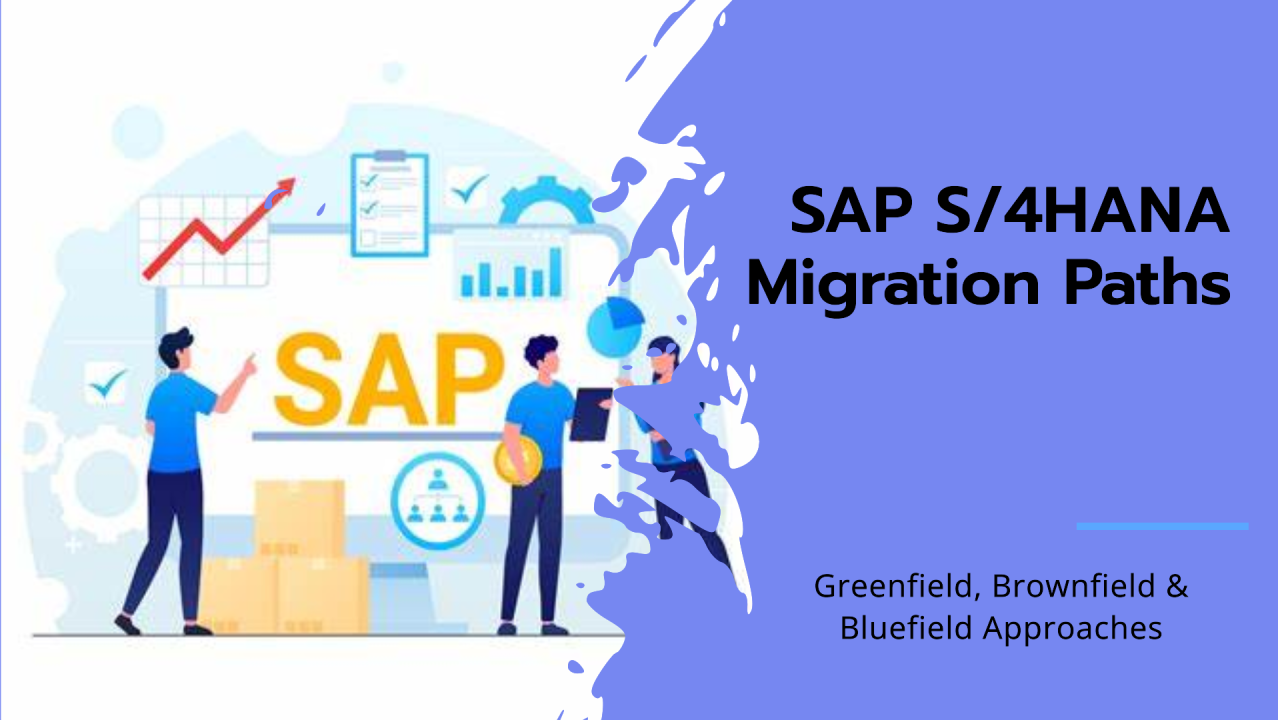Discover the differences between Greenfield, Brownfield, and Bluefield SAP S/4HANA migration approaches and choose the best path for your business before 2027.

Greenfield vs Brownfield vs Bluefield: SAP S/4HANA Migration Approaches Explained
As the 2027 SAP ECC end-of-maintenance date approaches, organizations across the African continent, such as in Harare, Johannesburg, Nairobi, and Cairo, are figuring out how to deal with SAP S/4HANA. The transition from ECC to S/4HANA is not a monolith, and SAP has presented three main options for migration: Greenfield, Brownfield, and Bluefield.
Each approach has its benefits and downsides as well as its viability given your existing system landscape or the business purpose and goals, as well as the digital maturity of your organization. They are meant to be a comprehensive illustration of what is available. Prompt Edify engages with African enterprises to analyze the options and identify a strategic approach for a successful SAP migration.

Why Migration Strategy Matters for African-Based Businesses
For a lot of organizations on the African continent, existing SAP ECC systems have been customized over the years to suit local business requirements—local tax laws, currency goals, or supply chains across borders, for example.
Now that SAP is forgetting their sold product, ECC, they have to decide to either:
If you have selected the incorrect approach, you could experience some really bad outcomes—data loss, extended project hours, and costs. It is important to understand the Greenfield, Brownfield, and Bluefield approaches.
Greenfield Implementation: Starting Fresh
Caveats:
Example:
A mining company from Zimbabwe, which has had SAP ECC for roughly 10 years, might consider switching to a Greenfield process to enhance its supply chain, leverage predictive analytics, and have a cloud-first S/4HANA paradigm.
Brownfield Implementation: System Conversion
Explanation
A Brownfield model is fundamentally based on the conversion of your existing ECC system to SAP S/4HANA. In a Brownfield migration, the company keeps most of its business processes (like warehousing & a separate job order system), historical data, and customizations while enhancing the system architecture and database.
It is the fastest way for the company to adopt S/4HANA without disrupting ongoing operations.
Ideal For:
A. business with a stable ECC system and a well-functioning, stable process
B. An organization with a lack of time or budget, a company that values operational continuity over business transformation
Key Advantages:
A. Faster Implementation—Because your existing system has been converted, you will go live in a fraction of the time compared to implementations that build and maintain new pathways.
B. Lower Cost—There is cost leverage because you will reuse much of your existing investment in ECC.
C. Minimal Disruption—End-users will experience little change to their daily routines.
D. Historical Data Retention—The long history of historical business would not need to be built or rebuilt from a previous system.
Considerations:
A. Legacy customization may be accompanied by inefficiencies in the new system.
B. Limited opportunity to redesign the process (if applicable).
This model may require a significant technical analysis of your data before migration to ensure compatibility.
Example:
A bank in Nairobi with a fully upgraded ECC environment may select Brownfield to perform a more expedited migration to S/4HANA while using their already successful process for bank core to comply with risk and regulatory protocols.
Bluefield Approach: Combining the Best of Both Worlds
Overview
The Bluefield approach allows organizations to have the best of both the Greenfield and Brownfield approaches by combining the advantages of both. This approach allows businesses to migrate processes and data selectively, which allows the organization to innovate in certain areas while preserving beneficial legacy components of the ECC.
This approach leverages intelligent migration tools that utilize the advanced capabilities of data-selective transformational solutions to meet the objectives of balancing innovation with stability.
Ideal For:
Key Advantages:
Things To Consider:
Example:
A manufacturing business in South Africa could choose to use Bluefield to begin by modernizing the finance and procurement features without changing production modules until more advanced phases.
Comparison of Greenfield, Brownfield, and Bluefield
Select the Best Type: Important Decision Considerations
Modernize Today, Lead Tomorrow
Transitioning from SAP ECC to S/4HANA with an established approach to crafting business scenarios is less a technological upgrade and more a strategic move toward digital transformation and business agility.
Greenfield, Brownfield, and Bluefield all can lead to successful outcomes through a pragmatic approach, knowledgeable expertise, and a trusted technology partner, which are imperative for organizations to deliver successful migration to S/4HANA.
By Team Prompt Edify
Have any enquiry? Call us
+(27) 740294414
(+91) 99932-86938
wecare@promptedify.com